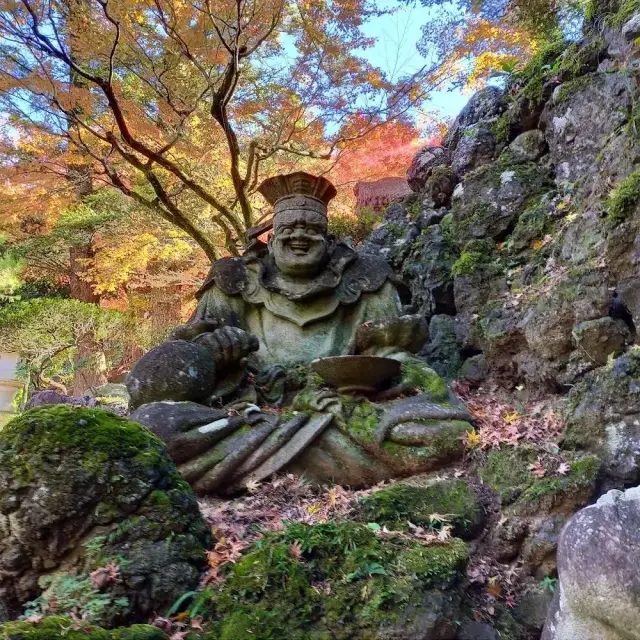https://www.dekitabi.com/itinerary/takasaki-museum-history-tour
Gunma Prefecture, nestled in the heart of Japan’s Kanto region, offers a captivating glimpse into Japan’s past and present. For those looking to immerse themselves in the rich tapestry of Japanese history, culture, and natural beauty, a visit to Takasaki Castle Ruins, Tokumeien Garden, Gunma Prefectural Museum of History, and Susano Shrine is an enriching experience. This guide will help you explore these significant sites, each providing a unique perspective on Japan’s heritage.
Takasaki Castle Ruins: A Window into Feudal Japan

https://www.dekitabi.com/attraction/the-remain-of-takasaki-castle
The Takasaki Castle Ruins, located in the city of Takasaki, Gunma Prefecture, are a fascinating site for history enthusiasts. Originally constructed in 1583 by the Takeda clan, the castle was an important strategic fortress during the feudal era. Though the original structure was demolished in the late 19th century, the ruins offer a compelling insight into the castle’s historical significance and architectural design.
Visitors to the Takasaki Castle Ruins can explore the remnants of its stone walls and moats, which paint a vivid picture of the castle’s former grandeur. The site has been carefully preserved and maintained, with informative signage and reconstruction efforts that allow visitors to visualize what the castle might have looked like during its prime.
For history buffs and architecture enthusiasts alike, the Takasaki Castle Ruins serve as a poignant reminder of Japan’s feudal past and the strategic importance of castles in shaping the country’s history.
Tokumeien Garden: A Tranquil Retreat

https://www.dekitabi.com/attraction/tokumeien-garden
A short distance from the bustling city of Takasaki, Tokumeien Garden offers a serene escape into nature. This traditional Japanese garden, established in the early 20th century, showcases the beauty of classical Japanese landscape design. The garden is renowned for its meticulously manicured lawns, tranquil ponds, and elegant teahouses.
Strolling through Tokumeien Garden provides an opportunity to experience the quintessential charm of Japanese gardens. The garden features a variety of seasonal plants, including cherry blossoms in spring and vibrant maple leaves in autumn. Each season brings a new dimension to the garden’s beauty, making it a year-round destination for those seeking a peaceful retreat.
The garden’s design emphasizes harmony with nature, reflecting the principles of Zen philosophy. Visitors can enjoy leisurely walks along winding paths, relax by the pond, or participate in traditional tea ceremonies held at the garden’s teahouse. Tokumeien Garden is a perfect place for contemplation and appreciating the art of Japanese horticulture.
Gunma Prefectural Museum of History: A Deep Dive into Local Heritage

https://www.dekitabi.com/attraction/gunma-prefectural-museum-of-history
For a comprehensive exploration of Gunma Prefecture’s history, the Gunma Prefectural Museum of History is a must-visit destination. Located in the city of Maebashi, this museum offers a rich collection of artifacts, exhibits, and interactive displays that trace the region’s historical development from ancient times to the modern era.
The museum’s exhibits cover a wide range of topics, including prehistoric artifacts, samurai culture, and the Meiji Restoration. Visitors can explore the evolution of Gunma’s society, economy, and culture through meticulously curated displays and engaging multimedia presentations. The museum’s knowledgeable staff and educational programs also provide valuable insights into the region’s historical significance.
The Gunma Prefectural Museum of History is an excellent resource for those interested in understanding the local context and historical backdrop of Gunma Prefecture. Its extensive collection offers a well-rounded perspective on the region’s past, making it a valuable addition to any historical exploration of Japan.
Susano Shrine: A Sacred Space of Shinto Tradition

https://www.dekitabi.com/attraction/susano-shrine-gunma
Located in Takasaki, Susano Shrine is a prominent Shinto shrine dedicated to Susanoo-no-Mikoto, the deity of storms and the sea. The shrine’s origins date back to ancient times, and it has been an important site of worship for centuries. The shrine’s serene setting and traditional architecture make it a significant spiritual and cultural landmark.
Visitors to Susano Shrine can admire its classic Shinto architectural style, characterized by wooden structures and intricate carvings. The shrine grounds feature beautiful gardens, sacred trees, and a tranquil atmosphere that invites reflection and prayer. Festivals and ceremonies held at the shrine provide insight into Shinto traditions and local customs.
The shrine is also known for its historical significance and connection to local legends and folklore. As a place of worship and cultural heritage, Susano Shrine offers a unique opportunity to experience the spiritual side of Japanese culture and the deep-rooted traditions of Shintoism.
Embracing Gunma’s Rich Heritage
Takasaki Castle Ruins, Tokumeien Garden, Gunma Prefectural Museum of History, and Susano Shrine each offer a distinctive glimpse into Gunma Prefecture’s rich cultural and historical heritage. From the remnants of feudal fortifications to the serene beauty of traditional gardens, and from the comprehensive insights of a regional museum to the spiritual ambiance of a historic shrine, these sites collectively represent the diverse facets of Japan’s past and present.
Exploring these locations allows visitors to connect with Japan’s history, culture, and natural beauty in meaningful ways. Whether you’re a history enthusiast, a nature lover, or someone interested in Japanese traditions, Gunma Prefecture provides a wealth of experiences that highlight the essence of Japan’s heritage.


Leave a Reply